News WOSCU
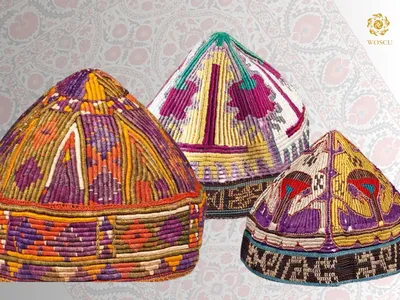
Collectible items from Central Asia and their collectors in the Czech Republic
The earliest dated items from Central Asia were donated by Natalya Petrovna (surname unknown) before 1863 and by František Kratky.
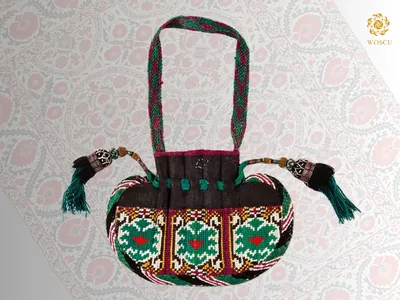
What items are represented in the Uzbek collection of the Naprstek Museum?
The Uzbek collection of artifacts forms a part of the Central Asian collection of the Náprstek Museum.

How did Navoi's poetry save the Timurid prince?
The influence of Alisher Navoi in the Ottoman Empire reached its peak during his lifetime.
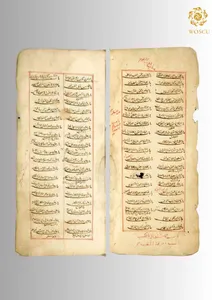
The written heritage of Uzbekistan in the National Library of the Czech Republic
Written references related to the history of Uzbekistan can be found in the National Library of the Czech Republic in Prague.

“Young man reading a book” from Louvre
The painting that is now in the Louvre Museum and was donated by Georges Marteau was originally faced, probably in an album (muraqqa‘) in an Iranian collection, with another painting of the same style that had been acquired by another collector, Henri Vever, which is now preserved in Sackler Gallery, Washington.
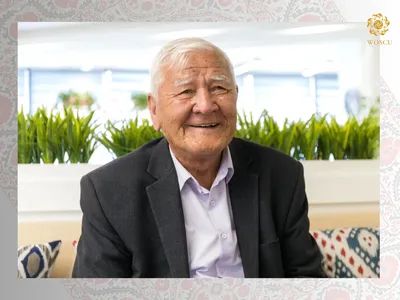
Today is the birthday of the legendary master ceramist Sharofiddin Yusupov
On April 29, 1945, the Uzbek potter, master ceramist "naqqosh," UNESCO diplomat, and full member of the Academy of Arts of Uzbekistan, Sharofiddin Yusupov, was born.
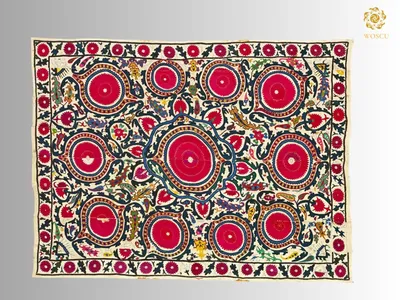
Suzani in Germany
The Saxonian State Collections of Ethnography (SES) were formed in 2004 from the three ethnological museums in Saxony – Leipzig, Dresden and Herrnhut.
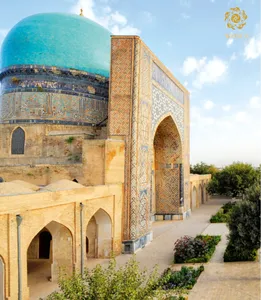
“Double” of “Shahi-Zinda” in Shahrisabz
Peculiar kinds of memorial and architectural monuments of the era of Amir Temur and his descendants are found in the “Dar ut-tilovat” complex in the city of Shahrisabz, Kashkadarya region.
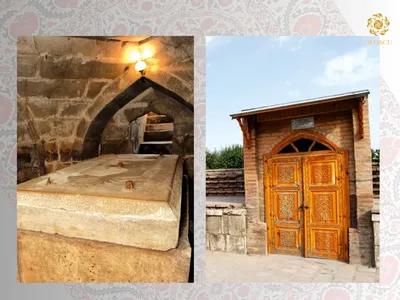
What inscriptions are on the wall of a unique architectural structure - the crypt of Amir Temur in Shahrisabz?
Thirty-five meters to the east of the remains of the entrance portal of Hazrat-I Imam architectural complex, the main monument of the Dar us-Sadat architectural complex in the city of Shahrisabz, Kashkadarya region, there is a tomb which experts believe Amir Temur had prepared for himself.
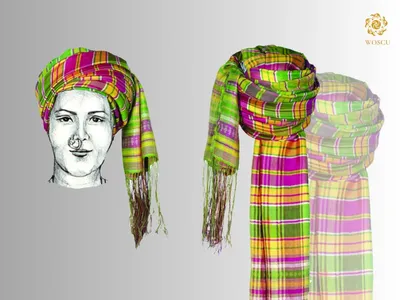
What kind of headdress did Karakalpaks wear in everyday life?
Casual headwear of Karakalpak women was turme – turban of kerchiefs or cloth, was spun on top of the tubeteika.
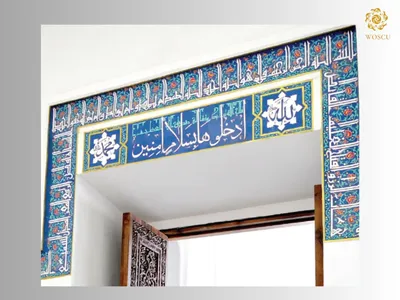
Where can we read the “beautiful names” of Allah?
During the mosque interior refurbishment in 2005, the master A. Ergashev wrote a fragment from the Koran over the northern entrance aperture.

What did Europeans buy in markets thinking it was a whistle?
The Saxonian State Collections of Ethnography (SES) were formed in 2004 from the three ethnological museums in Saxony – Leipzig, Dresden and Herrnhut.

What does “Guli Surkh” say on the door of the mausoleum where Jahangir Mirzo is buried?
On the door of the mausoleum of the architectural monument Dar us-Sadat in Shahrisabz, Kashkadarya region, where the Timurid prince Jahangir Mirzo is buried, you will read the inscription about Guli surkh.
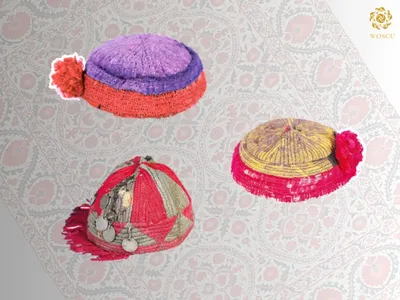
What did young Karakalpak girls wear on their heads?
At the beginning of the 20th century, the tahia decorated with coins and corals wore only by teenage girls up to 14 – 45 years.
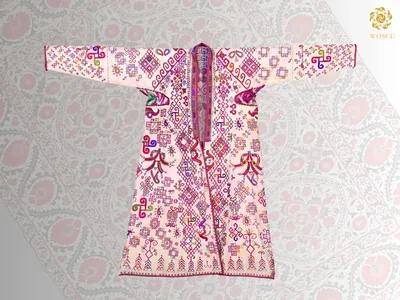
What kind of clothes did older Karakalpak women wear?
The clothes of elderly women was light, mainly from white cotton fabric: white dress aq keilek, aq kiymeshek headwear, cape-robe aq zhegde.
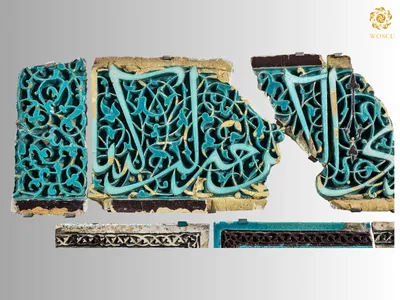
Tiles from the Buyan Quli Khan Mausoleum
The Museum of Arts and Crafts in Hamburg possesses 71 carved glazed tile fragments that once adorned the Buyan Quli Khan Mausoleum in Bukhara.
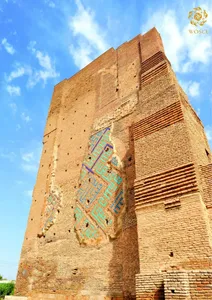
What do the prayer formulas on the inscriptions of the «a very tall construction» in Kashkadarya say?
The inscriptions on the facades of the mausoleum of Jahangir Mirzo (or Khazrati Imam), which is the main monument of the architectural complex “Dar us-sadat” in the city of Shahrisabz, Kashkadarya region, which Sharaf ad-din Ali Yazdi called «a very tall construction» in his work “Zafarnama”, contain words that glorify God.
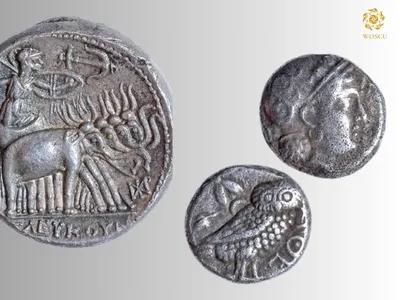
Amudarya Hemidrachm in the Fitzwilliam Museum Collection
A significant part of the Fitzwilliam Museum's collection consists of Central Asian coins originating from the territory of modern Uzbekistan.
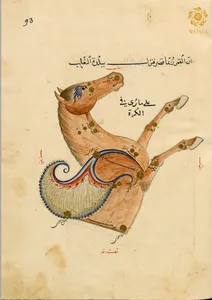
How did Ulugh Beg's "Book of the Fixed Stars" end up in Istanbul, and then in Paris?
In April 1891, a beautiful calligraphic copy of the astronomical treatise by al-Sufi, "Suwar al-kawakib al-sabita" ("Images of the Fixed Stars"), with 74 colored illustrations (Arabe 5036), made for the personal library of Ulugh Beg, likely in Samarkand during 1430-1440 while constructing his famous observatory, arrived at the National Library of France.

French Collections of Illustrated Manuscripts from Mawarannahr
The French collections of illustrated manuscripts from Mawarannahr represent a significant part of the cultural heritage stored in the National Library of France and the Louvre Museum.
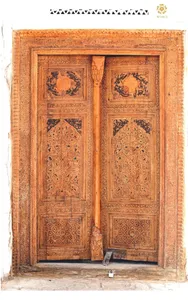
Who made the door of the mausoleum of Khazrati Imam?
The only and main entrance door of the mausoleum of Jahangir Mirzo (or Khazrati Imam), which is the main monument of the Dar us-Sadat architectural complex in the city of Shahrisabz, Kashkadarya region, was installed during one of the later renovations.
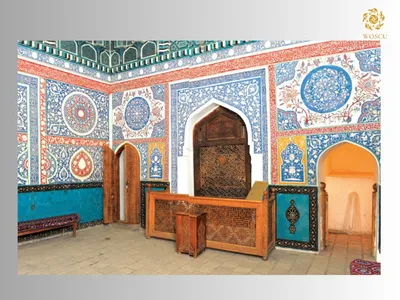
Ziyarat-khana of complex of buildings near the Qusam ibn ‘Abbas mausoleum
The sepulchral complex of Qusam ibn ‘Abbas consists of two structures: rooms for pilgrims (ziyaratkhana) and the cist proper.
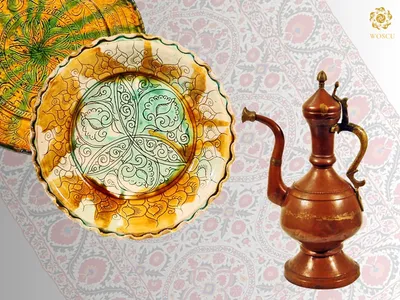
Museum enriched with items from the Uzbek tea room
The Saxonian State Collections of Ethnography (SES) were formed in 2004 from the three ethnological museums in Saxony – Leipzig, Dresden and Herrnhut.

The UNESCO Secretariat has received a 50-volumes book-album "Cultural legacy of Uzbekistan in the World Collections"
The ceremony to present the 50-volume book-album "Cultural Heritage of Uzbekistan in the World's Collections" was held at the UNESCO headquarters, with the participation of UNESCO's Assistant Director-General for Culture, Ernesto Ottone, and representatives from the Secretariat.

The Lubeck Ethnological Museum
In 1934 the collection of the cultural artifacts of foreign peoples in Lübeck became public property and gained museum status.
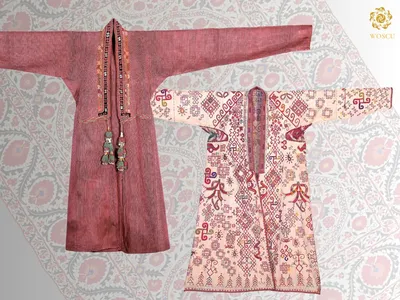
Zhegde as Karakalpak analogue of the paranji
Women’s going-out garments included the head cover zhegde.
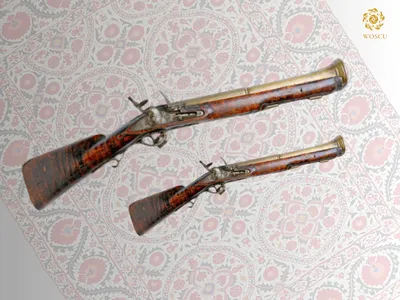
Collection of weapons in the Museum of History of Uzbekistan
The State Museum of History of Uzbekistan houses a significant collection of weapons from the 16th to 20th centuries.

Toreutics in Uzbekistan: Revival of Tradition
Copper embossing, which reached its peak in the 19th and 20th centuries, played a significant role in the lives of both rural and urban populations of Tashkent.
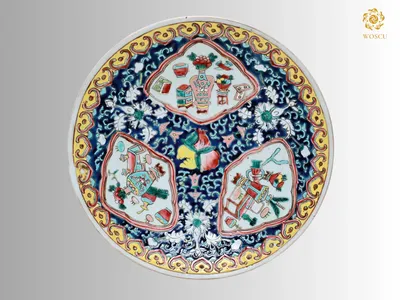
Through the Ages: The Path of Porcelain into Central Asia
Porcelain, as a symbol of refinement and cultural exchange, traveled along the Great Silk Road from China into the depths of Central Asia for many centuries, leaving a unique legacy in this region that was subsequently enriched by European and Russian traditions.
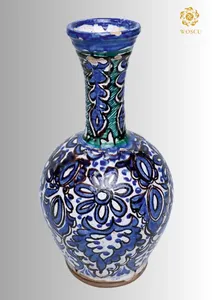
Regional Characteristics of Uzbek Pottery Art
Uzbek pottery art has long been famous for its diversity and uniqueness, reflecting the cultural and historical features of different regions of the country.

In the Depths of the Uzbekistan History Museum: Unique Expeditions and Scholarly Discoveries
The State Museum of History of Uzbekistan is a unique place that houses treasures telling the rich culture and history of this country.

Ishik - winter shapan for wealthy Karakalpak women
In winter, rich Karakalpak women wore the shapan from expensive ikat silk ishik, furlined and trimmed the sleeves too.
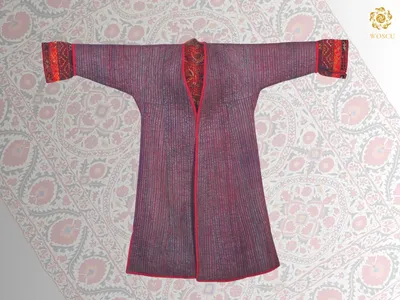
What was the outwear shapan of Karakalpak women like?
Outwear shapan of women sewn from expensive brocade, silk fabrics was very ornate.
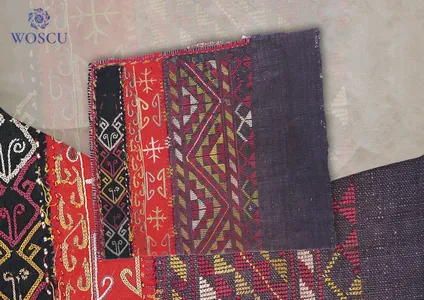
Zhengse is a distinctive feature of Karakalpak women's costume
Karakalpak women’s clothes had decorative details, that were not in Khorezm suit, as on sleeves jengse worn over sleeves of outerwear.
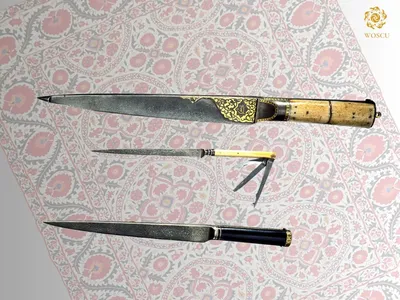
The Armory of Dresden State Art Collections
From the 16th century the cities of Mawarannahr began to gradually lose their role as major transshipment points of the great trade artery.
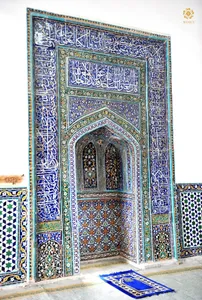
Mosque at the mausoleum of the Qusam ibn ‘Abbas
According to expert opinion, the mosque is one of the latest in the group of buildings standing around the Qusam ibn ‘Abbas mausoleum.
